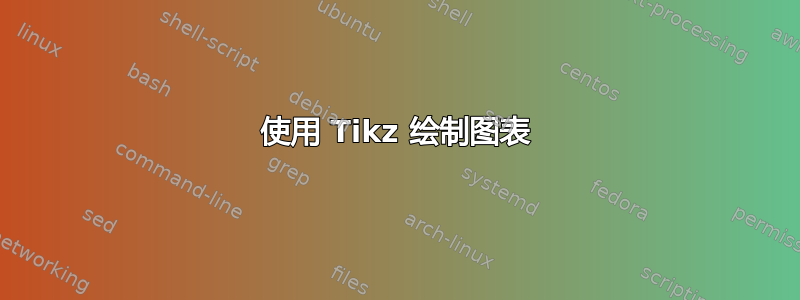
我想用 Tikz 绘制此图:
我有这个代码:
\begin{tikzpicture}[scale=0.2]
\begin{scope}
% Relleno gris superior e^x
clip \fill [color=gray!40, domain=-1.2:1.2, variable=\x]
(-1.2, 0)
-- plot ({\x}, {exp(\x)})
-- (-1.2, 3.29) -- cycle;
% % Relleno blanco inferior de e^-x
clip \fill [color=white, domain=-1.2:1.2, variable=\x]
(-1.2, 0)
-- plot ({\x}, {exp(-\x)})
-- (1.2, 0) -- cycle;
\end{scope}
\begin{scope}
% Relleno gris inferior e^x
clip \fill [color=gray!40, domain=-1.2:1.2, variable=\x]
(-1.2, 0)
-- plot ({\x}, {exp(\x)})
-- (1.2,0) -- cycle;
% Relleno blanco inferior de e^-x
clip \fill [color=white, domain=-1.2:1.2, variable=\x]
(-1.2, 3.29)
-- plot ({\x}, {exp(-\x)})
-- (1.2, 3.29) -- cycle;
\end{scope}
% Funciones e^x
\draw[-] plot[domain=-1.2:1.2] (\x,{exp(\x)});
% Funciones e^-x
\draw[-] plot[domain=-1.2:1.2] (\x,{exp(-\x)});
% coordinate grid
\draw[->] (-4,0)--(4,0) node[right]{$x$};
\draw[->] (0,-4)--(0,4) node[above]{$y$};
\draw (0,1) node[ right] {{\tiny $1$}};
\end{tikzpicture}
答案1
欢迎!从你的照片上看我不知道你想要哪一个。
\documentclass[tikz,border=3mm]{standalone}
\begin{document}
\begin{tikzpicture}[>=stealth,%
p1/.style={insert path={plot[domain=-1.2:1.2] (\x,{exp(\x)})}},
p2/.style={insert path={plot[domain=-1.2:1.2] (\x,{exp(-\x)})}}]
% fills
% upper
\begin{scope}
\clip[p1] -| cycle;
\fill[gray!40,p2] |- cycle;
\end{scope}
% lower
\begin{scope}
\clip[p1] -- (1.2,0) -| cycle;
\fill[gray!40,p2] -- (1.2,0) -| cycle;
\end{scope}
% plots
\draw[->] (-4,0)--(4,0) node[right]{$x$};
\draw[->] (0,-4)--(0,4) node[above]{$y$};
\path (0,1) node[right,font=\tiny] {$1$};
\draw[semithick,p1];
\draw[semithick,p2];
\end{tikzpicture}
\begin{tikzpicture}[>=stealth,%
p1/.style={insert path={plot[domain=-1.2:1.2] (\x,{exp(\x)})}},
p2/.style={insert path={plot[domain=-1.2:1.2] (\x,{exp(-\x)})}}]
% fills
% upper
\begin{scope}
\clip[p1] -| cycle;
\fill[gray!40,p2] |- cycle;
\end{scope}
% lower
\begin{scope}
\clip[p1] |- cycle;
\fill[gray!40,p2] -| cycle;
\end{scope}
% plots
\draw[->] (-4,0)--(4,0) node[right]{$x$};
\draw[->] (0,-4)--(0,4) node[above]{$y$};
\path (0,1) node[right,font=\tiny] {$1$};
\draw[semithick,p1];
\draw[semithick,p2];
\end{tikzpicture}
\end{document}
我认为这和你的想法很相似,但是如果你使用
clip \fill
没有clip任何效果。此外,将重复使用的路径存储在类似p1和p2这里的样式中可能更简单。
您实际上并不需要剪辑。
\documentclass[tikz,border=3mm]{standalone}
\begin{document}
\begin{tikzpicture}[>=stealth,%
p1/.style={insert path={plot[domain=-1.2:1.2] (\x,{exp(\x)})}},
p2/.style={insert path={plot[domain=-1.2:1.2] (\x,{exp(-\x)})}}]
% fill
\fill[gray!40,p1] -- plot[domain=-1.2:1.2] (\x,{exp(-\x)});
% plots
\draw[->] (-4,0)--(4,0) node[right]{$x$};
\draw[->] (0,-4)--(0,4) node[above]{$y$};
\path (0,1) node[right,font=\tiny] {$1$};
\draw[semithick,p1];
\draw[semithick,p2];
\end{tikzpicture}
\end{document}
另一个版本的工作方式类似。






